This third blog in our series on how our dogs tell us they have pain will focus on postural changes. With chronic pain, like from arthritis, these changes can occur more slowly over time, making them harder to recognize. As always, it’s important to know what normal is for your dog to be able to recognize any change.
Posture is the way a body is held during standing, sitting or lying down. Posture in dogs will vary depending on breeds. There are 3 types of toplines that are normal for certain breed types:
- Level topline – most common and should be flat and smooth
- Arched topline – common in sighthounds
- Sloped topline – common in German Shepherds and is the least common conformation.

Flat Topline
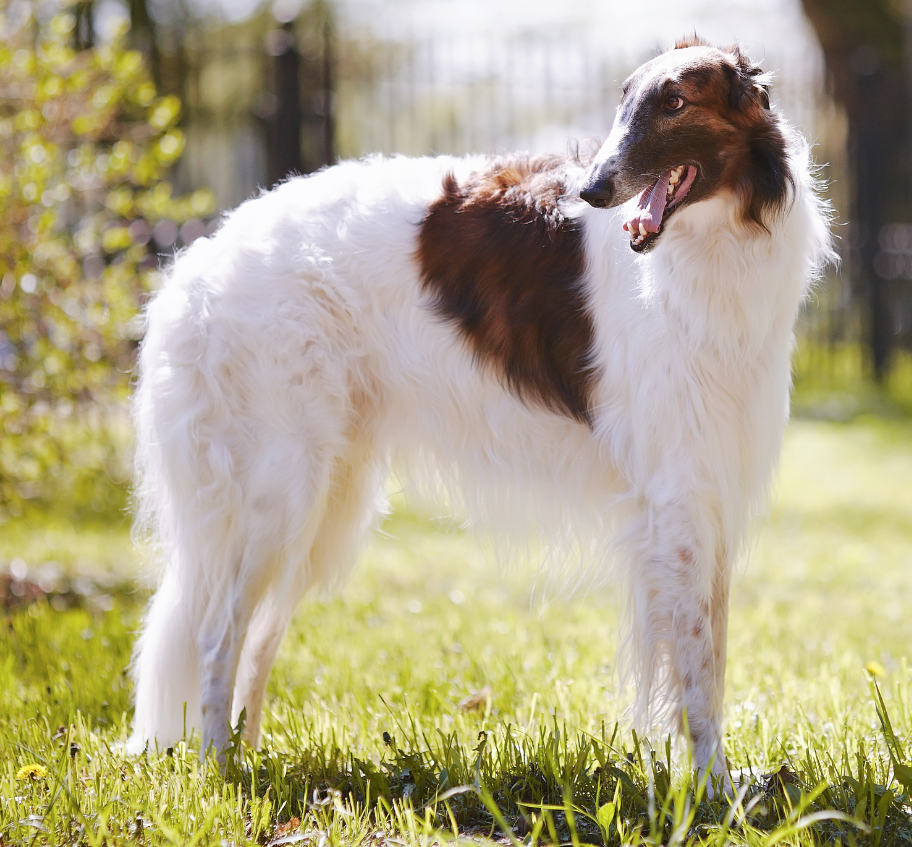
Arched Topline

Sloped Topline
Postures in sitting and lying are also important to take note of. Can your dog sit squarely and tightly? Meaning, are their hips, knees and ankles flexed so that their legs are neatly underneath their bodies? Does your dog always choose to lie on one side and not the other? Again, make note of what’s normal so you can identify what is not.

Square Sit
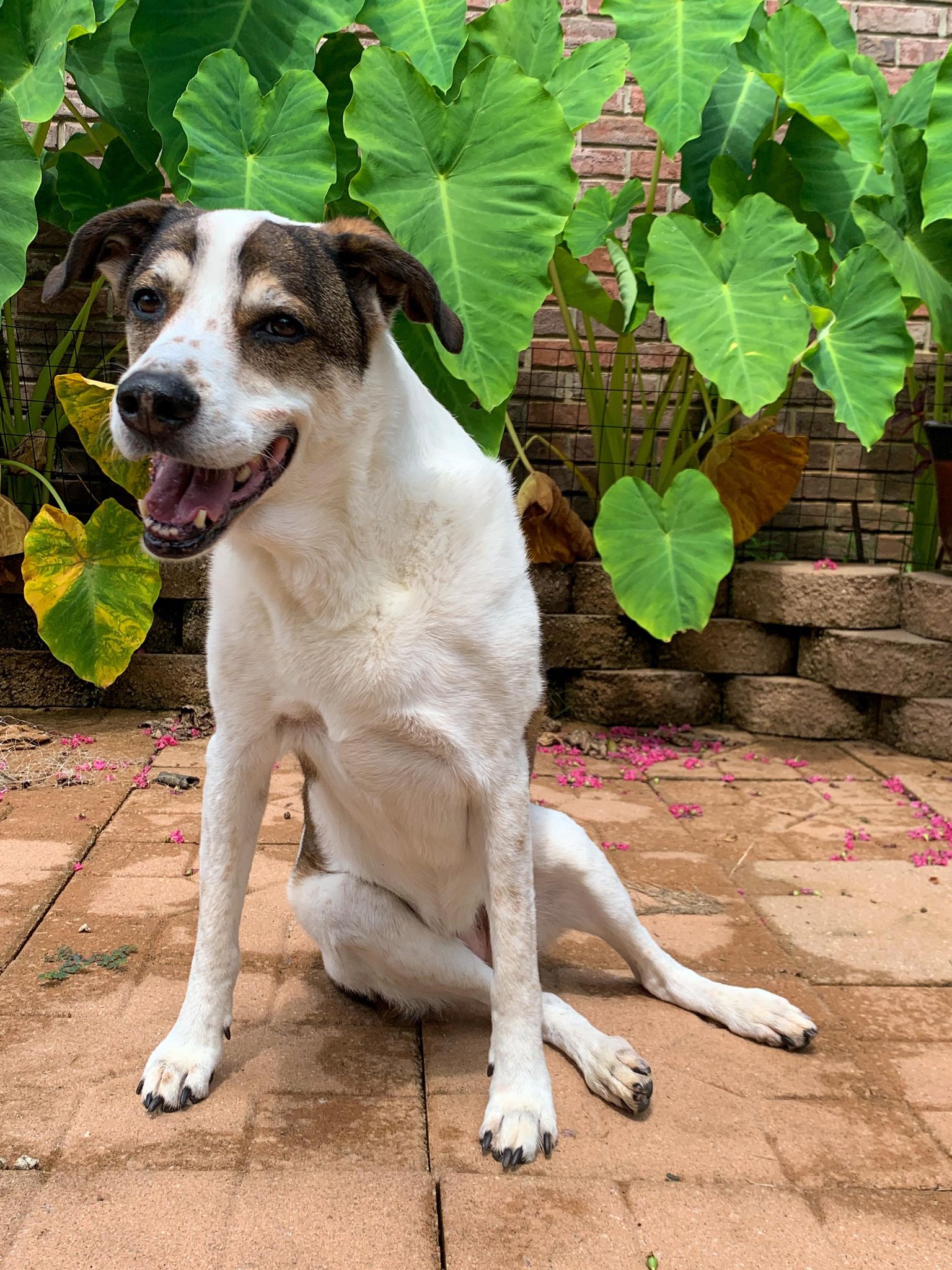
Sloppy Sit that could indicate a problem
What changes in my dog’s posture might indicate pain?
1. Change in topline
Go back and ensure you know what the ideal back shape for your dog is. Then take a look at the following:
- Roaching – dog’s back is rounded upward
- Symmetry from side to side – look down from above at your dog’s back. Does the spine curve to the left or the right?
- Sags or lumps – does your dog have an area of their spine that looks sunken or areas that have overdeveloped muscle?
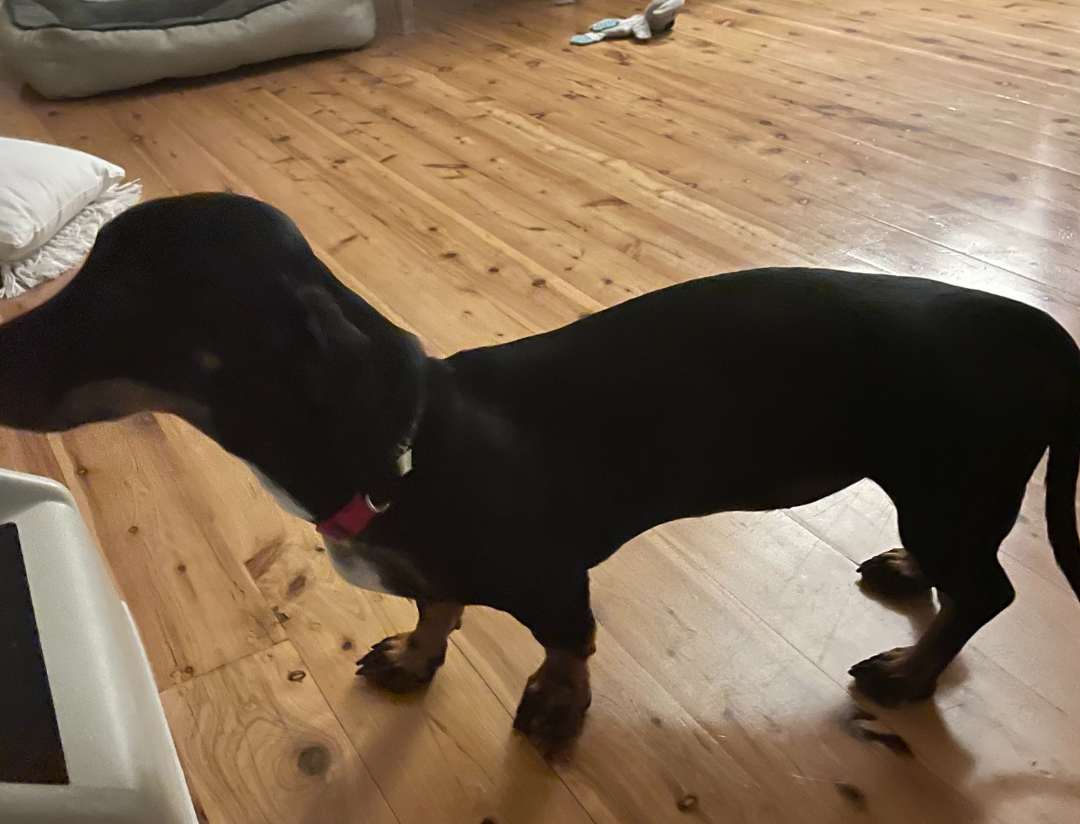
Rounded or roached topline
2. Holding their head differently
Is your dog holding their head down or lower than normal? Are they reluctant to move their head? Your dog’s muzzle or snout should stay level with the horizon when they are walking, sitting or standing. Holding their head low can be a signal a few different issues.
First is neck pain itself. If your dog is unwilling to move their head and neck it’s likely because it hurts.
Secondly, a dog with hind end pain and weakness will shift their weight forward into their front legs. When this happens it can make it more difficult for a dog to lift their head into a normal neutral position when standing or walking. You might think of them as looking “crouched” in their front legs.

Low head posture due to weakness in the back end.

Low head posture due to neck pain.
3. Position of the legs and feet
Dog’s should stand in a square stance position. Think of a show dog whose legs are straight under their body. When you are looking at your dog look for their feet to be being lined up and also where the feet are under their body (i.e. more forward towards their nose or more backwards towards their tail). If a dog has pain in their limbs, they’ll shift away from the pain. If the pain is in only one limb (or worse in a particular limb), they will shift their weight not only forward, but laterally to the opposite side. So if the back left leg is sore, a dog will shift their weight into the front right leg.
A dog’s front feet should be in line with each other and their hind feet are also inline with each other. If they are lessening the load on a joint, they may step their feet out of alignment.
Also take a look at the way their legs are pointed. Elbow pain may lead a dog to cock their elbows outwards and hip pain may lead to back feet pointed outwards.
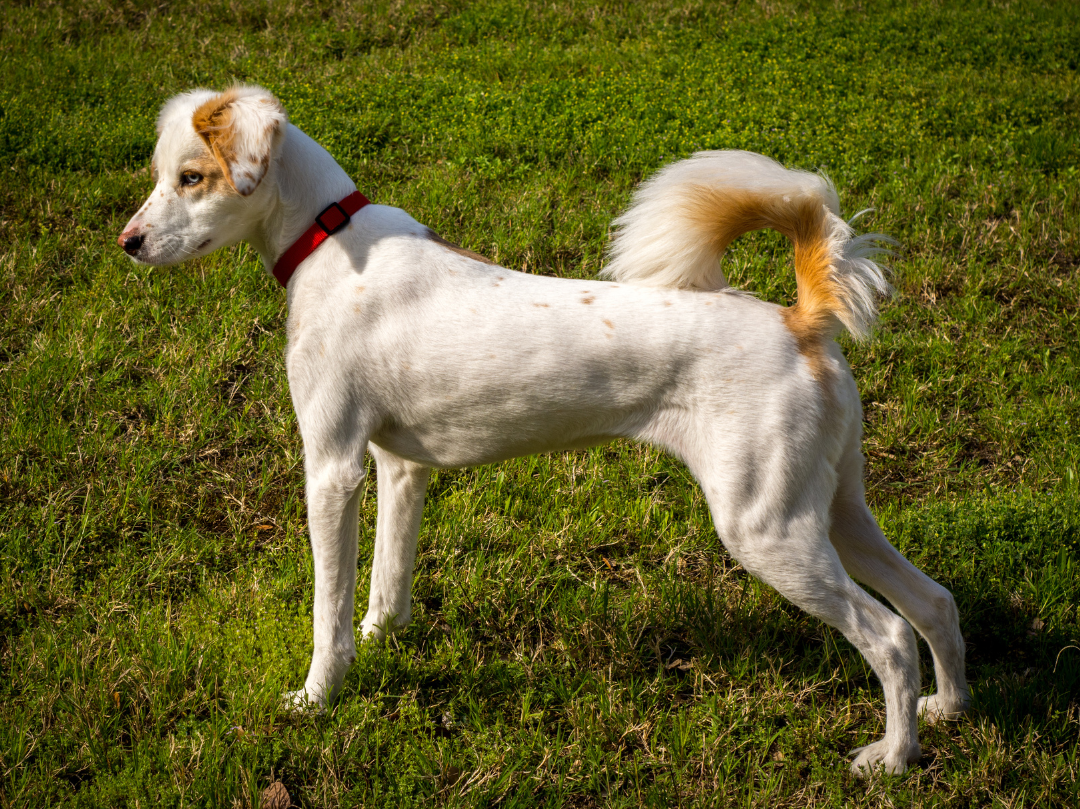
Ideal Posture
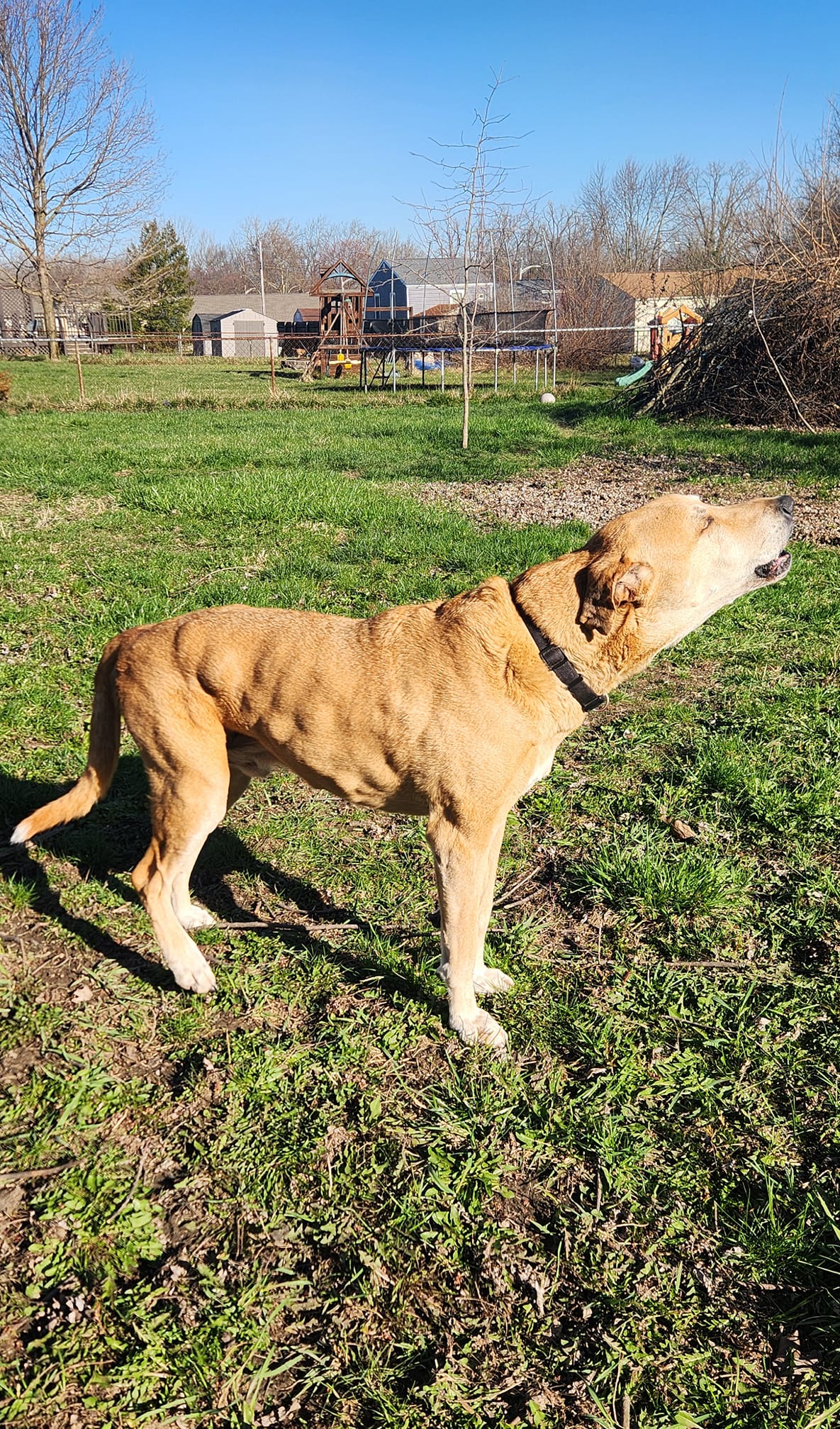
Weight shifted off of the hind legs
4. Change in how the tail is carried
A dog should be able to move their tail freely and have a good wag. Changes to how they use their tail (or reluctance to use their tail) should be a cause for concern. Most notably, lumbosacral disease can cause your dog pain if they hold their tail up or wag their tail. It’s an issue with the joint just above their tail. You can learn more about it here.
A dog also uses their tail for balance. If you notice your dog is always moving their tail to one side, it may be to help them move their balance. Some dogs will even move their tail with their body to help them move a leg forward.
5. Change in body shape
Dogs should look equally muscled in the front and hind legs. Often pain and weakness with chronic issues, like arthritis, the weight will shift into the front legs making a dog’s body look almost torpedo like. They chest and shoulder muscles can become overdeveloped and the fur over the chest will start to look like a lion’s mane. In the back legs, the dog looses muscle.
With these muscle changes a dog will often stand wider in the front legs. In the hind legs, a dog could either stand wider or narrower. The important point? It’s the change.
Yikes! I think my dog has pain!
Now that you’ve recognized there is an issue you can take steps to improve the problem. Pawsitively Fit recommends checking in with your veterinarian first. If your dog is in significant pain, the kind thing to do for your dog is to start pain medications if your vet feels they are warranted. Next step is rehab! We can help with a non-medication approach to reducing your dog’s pain (whether it be hands-on therapies like massage or stretching) and help your dog to use their body better and regain strength!
Fiona is our 10 year old Cardigan Welsh Corgi, Always very active, and athletic, we were shocked and dismayed when, all of a sudden, she would literally scream in pain whenever she moved.We put her on crate rest for about 3 weeks and she seemed to improve. However, within a few days, she was back in pain again.We gave Shauna a call and she came to give Fiona an assessment. Suspecting she had an issue with her neck, we were given exercises for her.We faithfully applied these exercises as per Shauna’s instructions and Fiona gradually started to improve.One year later, and Fiona is acting like a 3 year old.She rips around the yard and plays with the other dogs like there was never anything wrong.If she seems to be getting sore, we do exercises with her and TRY (LOL) to get her to take it a little easier.We cannot thank Shauna enough for giving us back our active and engaged girl.We would highly recommend Pawsitively Fit for any of your canine rehabilitation requirements!




